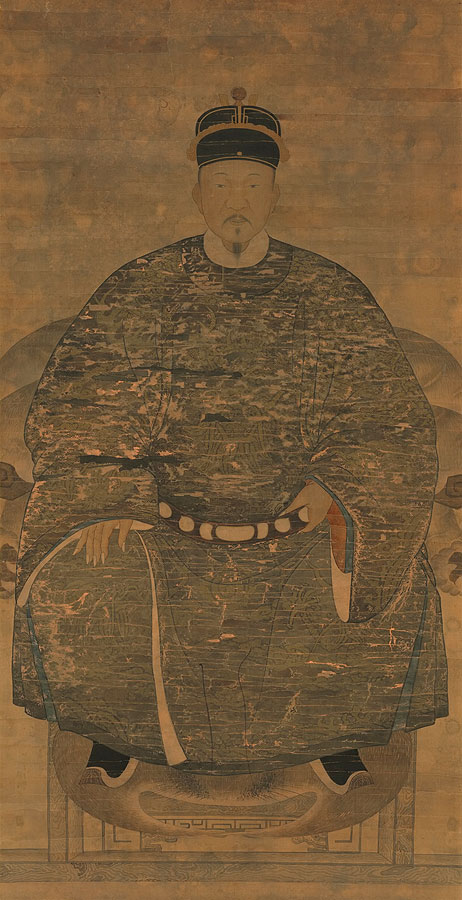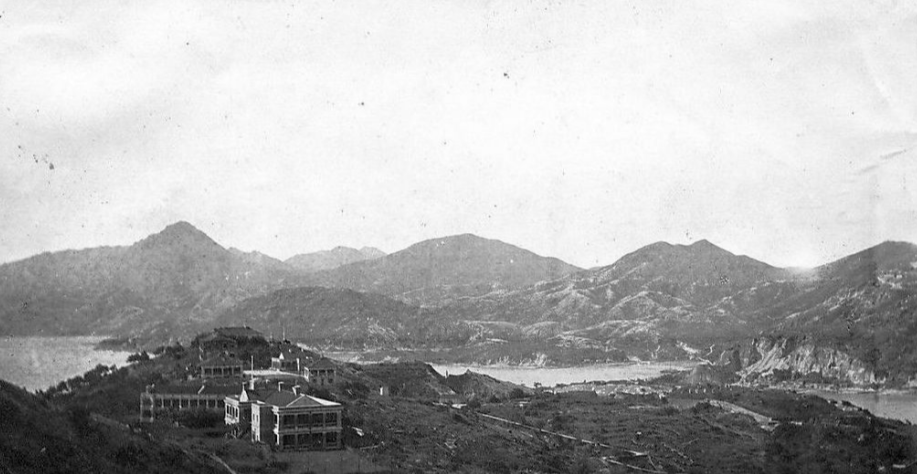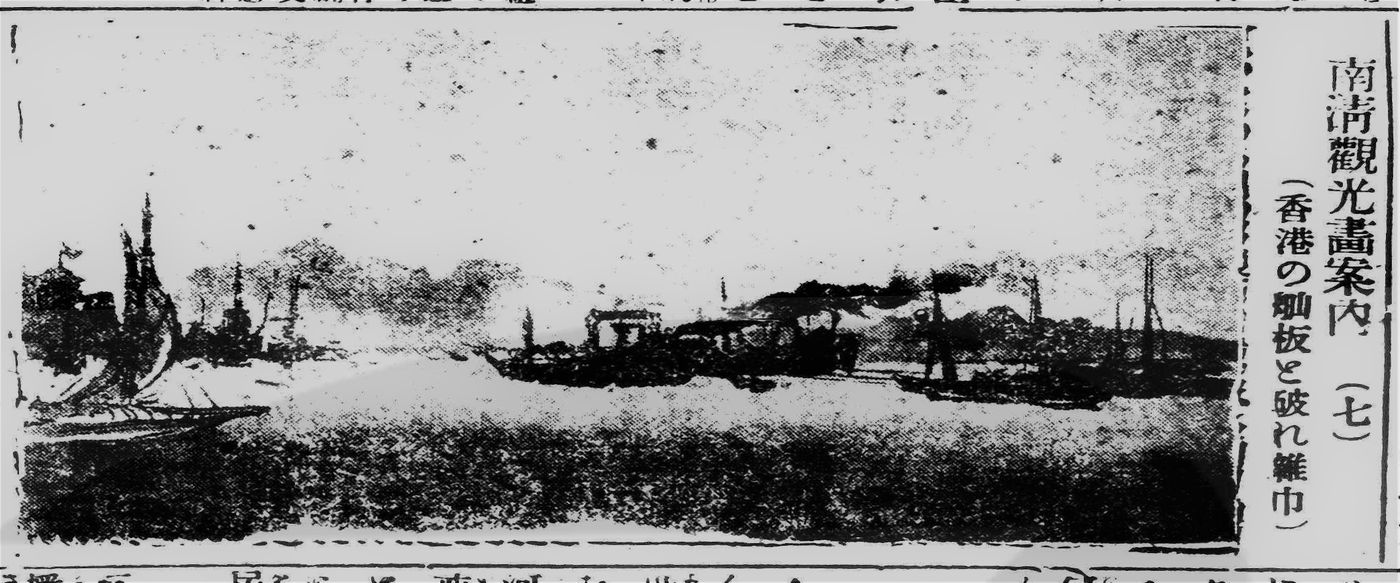[Interesting Facts] Japanese painters broke into Hong Kong military center! ? The espionage case that stirred up waves in East Asia in 1910
On May 3, 1910, on this day, South China Morning Post ("South China Morning Post"), the largest English-language newspaper in Hong Kong at the time, published a report titled "THE ALLEGED SPY: Sentenced to Imprisonment", The content mentions that a Japanese "Kokei Nasu", who is said to be a painter, trespassed on the British military base in the Lei Yue Mun Strait and made sketches of the local fortresses and defense facilities. As a result, he was taken by the military to the Shau Kei Wan Police Station for interrogation. And decided to detain him.

For readers in Hong Kong at the time, this matter was no stranger, because the media had continued to report on the case as early as the end of April, and this report was just a summary of the previous fragments of news and announcing the latest situation. However, it is not only the Hong Kong media who are paying attention to this espionage case. At the same time, newspapers and media in Shanghai, Tokyo, and even Taiwan are following the matter. But in The North-China Herald ("North China Herald"), the most influential English-language newspaper in Shanghai at that time, the name of "spy" was written as "Hotei Nasu". Now, who is this "spy painter"?
Fortunately, on May 4, Taiwan across the Taiwan Strait also paid attention to this case. From the Taiwan Daily News, the official media of Taiwan's Governor-General's Office, we were able to confirm that the spy's name was "Nasu Fengqing" (Nasu Houkei).

Toyoyoshi Nasu? For those who are not familiar with Taiwan art history, it should be a very unfamiliar name. If you search online, you may know that he has been to Taiwan several times. He was commissioned by the governor to imitate the national treasure "Portrait of Zheng Chenggong", and presented it to Tainan Kaishan Shrine (now Yanping Junwang Temple) where Zheng Chenggong is worshipped.
In addition, Nasu has a close relationship with the cultural circles of Taiwan. Not only did it have contacts with Ishikawa Kinichiro (1871-1945) and Wei Qingde (1887-1964), but he even went around Taiwan to describe Taiwan. Beautiful scenery everywhere. Because of this, the Taiwanese media attached great importance to what happened to him in Hong Kong and actively reported on it.

It is worth mentioning that readers who have visited the exhibition "Immortal Youth - Rediscovery of Taiwanese Art" at the Beijing Normal University Art Museum may have an impression of another name he used after the 1920s, "Nasu Yacheng".
Is this mountain painter who loves Taiwan's mountains and forests, climbed the new mountain (Yushan) and sketched, and completed the masterpiece "The Picture of the New Mountain" really a Japanese spy in the eyes of the Hong Kong military and the media?
Let's go back and sort out the whole incident!
- what happened
On the afternoon of May 2, 1910, John Roskruge Wood (1877-1953), Deputy Governor of Hong Kong, was officially in charge of hearing the case: a few days before, the painter Toyoyoshi Nasu (hereinafter referred to as Nasu) was accused of breaking into the At the Lei Yue Mun Strait Barracks, a warrant officer of the Royal Garrison Artillery thought the man was behaving suspiciously, so he conducted an investigation and found several sketches depicting the location of the fort and the barracks from Nasu. Since this place is a dangerous place to defend Hong Kong and involves military secrets, he was transferred to the nearby Shau Kei Wan Police Station.

Afterwards, his sketchbook was confiscated by the army. After reviewing it, the army found that the artist had accurately described the entrances and exits of the military base, the relative geographical location and distribution of the surrounding mountains and forts, and even some new forts that had just been installed were also drawn. out. This made the military quite nervous, thinking that as long as they had these sketches, they would be able to grasp the location of the firepower deployment in the Lei Yue Mun Strait.
- The position of Hong Kong and English-language media
Shanghai's "North China Herald News" pointed out that the entire espionage case has attracted special attention because it was just discovered a few days ago that Japanese spies were haunting Manila, the Philippines. It may also be because of this that the Hong Kong military attaches great importance to this incident. However, there is more to it than that.
When Nasu was taken to the Shau Kei Wan Police Station, he was accused of having a very bad attitude. It is said that although he could speak some English and Chinese, he yelled loudly in Japanese most of the time, and even threw the water glass provided by the police to the ground. This made the police very dissatisfied, and the media also reported it.
- Japan's position
For Japan, the "Nasu Incident" must be handled properly and cannot be ignored: this is because in 1902, Britain and Japan had just signed an alliance, which was renewed in 1905. Obviously, the Japanese government did not intend to compromise the relationship between the two countries due to incidents. change.
On the other hand, "Taiwan Daily News" also accused the English-language media of making comments unfavorable to Nasu, believing that this was caused by "one dog barking and ten thousand dogs responding", which is an exaggerated and distorted report.

Analyzing the Taiwan and Japanese media reports on this incident, it can be seen that the Japanese regard the incident as "the painter's unintentional fault", trying to make the major incident minor and trivial. On May 8, 1910, "Taiwan Daily News" reported that the government asked the Consul General in Hong Kong "Funada" (it should be misplaced by the newspaper, the consul at that time was Chenichiro Funatsu, who later served as an advisor to the regime of Wang Zhaoming in Shanghai), to target " Negotiations with the Hong Kong military on the Nasu incident" and "stated the truth to the local government".
result
The whole case seems to have come to an end on May 25. On the same day, Tokyo's "Asahi Shimbun" used the headline "The Espionage Incident Ended (Bangren Painter's Crime)" to reorganize the incident, emphasizing again that the incident was just a Japanese painter's wrongful entry into a military important place, which was really an unintentional mistake. Fang's understanding.
However, Nasu's disrespectful behavior at the Shau Kei Wan Police Station still resulted in him having to accept about six weeks of labor work and a small fine. At this point, the entire "Spy Case (Nasu Incident)" has come to an end.
- more
Interestingly, during the period of detention, Nasu still submitted manuscripts, before the "Taiwan Daily News" published his travel notes and illustrations on Yashan in Guangdong with architect Ito Chuta (1867-1954) and others before he came to Hong Kong .
In mid-June, the editor-in-chief and editor-in-chief of "Taiwan Daily News", namely the well-known "China hand" Tahara Zhenjiro (No. Tiannan, 1862-1923), visited in person during his transit in Hong Kong when he left for Europe. Nasu, as the representative of Taiwan. After the two met, Nasu took out a letter, which contained his painful experience in prison, with illustrations. After seeing it, Tian Yuan expressed his feelings:
See you all the time. Yu Yin was saddened by the rules of England and France, and did not treat the Japanese as the Europeans, but as the Qing people treated the Japanese. He still ordered (Nasu) to transport stones and imposed various punishments.
However, although Nasu encountered this accident during his trip to China, it did not affect his interest in continuing to travel and sketch. Then he left Hong Kong, traveled northward through Shantou, Chaozhou and other places, as far as Shanghai and Hankou, and came to Taiwan again at the end of the same year to start a peak of his creative activities in Taiwan.

However, is Nasuta a spy? As early as the end of the 19th century, a large number of Japanese ronin sneaked into China as spies, such as the well-known Kotaro Munekata (1864-1923). And Hong Kong, where revolutionaries at home and abroad gather, naturally also has traces of spies. However, in fact not all the so-called "spies" are professionally trained soldiers, and some are often only charged with academic tasks, investigating Chinese culture and society. However, the materials and images they left behind will become an important way for Japan to understand the internal intelligence of this huge empire.
Therefore, Nasu may not be a spy with the task of investigating military secrets, but he accidentally broke into a military important place to sketch, and he made good friends with many Japanese bureaucrats and scholars. In the turbulent early 1910s, what he did , is no different from a spy to other countries.
In 1944, at the end of World War II, Taiwanese painter Zhang Wanchuan (1909-2003) served as a record sketcher in the Japanese army. According to his self-report, personal sketching activities at that time were full of inconvenience. He was mistakenly caught several times while portraying military bases.
This situation even happened in our own army, let alone Nasu's behavior at that time? It can be said that even if the traveling painter has no intention of doing so, the huge torrent of the chaotic era will still push him to a dangerous frontier.
Incidentally, it seems that all the sketches in Leiyumen were confiscated at that time, but among the several landscape sketches that Nasu sent to Taiwan media later, some paintings depicting local ships and seascapes may have survived. For the turmoil in Hong Kong this time, leave some image witnesses.

References:
- South China Morning Post (South China Morning Post), 1910-04-28(6); 04-29(6); 05-03(7).
- The North-China Herald, 1910-05-06 (PG.292).
- Taiwan Daily News, 1910-05-04(5); 05-05(2); 05-08(2); 05-08(5); 05-13(4); 07-07(1); 12-29(1).
- Asahi Shimbun, 1910-05-25(2).
- Zhang Wanchuan's dictation, from Huang Qihui, "War and Art--Art Activities and Painting Styles in Taiwan at the End of Japanese Occupation (1937.7-1945.8)", Master Thesis of the Institute of Art History, National Taiwan University, 1997.
- Editing Committee of the Centennial History of the Japanese Academy of Fine Arts, "Three Volumes of the Centennial History of the Japanese Academy of Fine Arts" (Tokyo: Co-editor, 1992).
Like my work? Don't forget to support and clap, let me know that you are with me on the road of creation. Keep this enthusiasm together!





- Author
- More